 |
Matronics Email Lists
Web Forum Interface to the Matronics Email Lists
|
| View previous topic :: View next topic |
| Author |
Message |
richard.goode(at)russiana
Guest
|
 Posted: Thu Feb 10, 2022 8:44 am Post subject: Housai engine overhaul update - Very successful extended tes Posted: Thu Feb 10, 2022 8:44 am Post subject: Housai engine overhaul update - Very successful extended tes |
 |
|
Very successful extended test of our first Housai overhaul!
And dynamometer tested at 354 hp!
We have spent much longer than we would normally to totally overhaul our first HS-6 engine, although it is almost identical to the AI 14 engine which we have been overhauling for 60 years. But we had dismantled AI 14 and HS-6 side-by-side to establish the few areas of difference, and also importantly, which we know will be necessary for military customers for this engine, we needed to have a full and detailed overhaul manual. We were able to obtain a slightly abbreviated manual from China, which of course needed translating, and then combined that with the full AI 14 overhaul manual, but of course using the many thousands of different Chinese part numbers.
And, as we have written before, we could see that there was a strong requirement from private pilots to have more power, to an extent to reduce the attraction of changing to the M 14 engine of 360 hp. Of course this is a complex change involving quite a lot of differences to the airframe in terms of oil system; oil breather; mounting of the air intake gills, and of course the requirement for a totally different propeller. So we set ourselves the target of 330 hp, which we felt sure would be conservative.
We planned to achieve this through the following:
<![if !supportLists]>Ã <![endif]>Compression ratio increased to 7.2:1 using Carillo pistons
<![if !supportLists]>Ã <![endif]>Turning the engine faster. The AI 14 is catalogued at 260 hp at 2350 rpm. But the AI 14 RF version produced 300 hp with absolutely no mechanical change except turning the engine faster. We believe this was at 2600 rpm.
<![if !supportLists]>Ã <![endif]>When the engines were originally manufactured, it was on a production-line basis with semi-skilled workforce which meant that the authorities allowed quite generous tolerances to avoid any problems in service. In particular the clearance between impeller and diffuser in the supercharger was significantly larger than can be obtained if very careful assembly by skilled specialists is used. We know from our M 14 experience that moving the two more closely, albeit totally safely, will immediately increase power by 25 hp.
<![if !supportLists]>Ã <![endif]>Smoothing the junctions at each end of the intake tubes between supercharger and cylinders.
<![if !supportLists]>Ã <![endif]>Installing our AYC coils and automotive plug conversion kit.
It should be noted that the reason that the HS-6 develops 285 hp rather than the 260 hp of the AI 14 is simply because the supercharger turns faster, rather like our PF conversion on the M 14 engine, through different gears in the accessory drive.
The final result was 307 hp at 2350 rpm and 354 hp 2500 rpm. The engine was completely smooth and all parameters absolutely normal. We feel that increasing it to 2600 rpm will increase the power more, but that the current limitation is the efficiency of the original Chinese propeller, and until a better propeller is available, there is probably no point to increase rpm and obtain more power.
We recognise that some might be sceptical about these power outputs, but firstly an AI 14 RF but with the HS-6 supercharger gearing would probably deliver 325 hp at 2600 rpm. Given the other modifications that we have done, the achievements are quite reasonable. I should also point out that this is a properly calibrated dynamometer with the strain gauge inbetween propeller shaft and propeller sending the torque figure via Bluetooth to a laptop.
Inevitably we expect that people will ask us about potential powers beyond 354 hp, and importantly that this was measured at only 2500 rpm on the basis that we felt with current propellers that further power was not really necessary. However, it is important to examine the HS-6 in relation to the M 14 P which is of course an uprated and updated version of the engine. Interestingly the areas that contribute to power in terms of size of the valves; valve opening and duration are the same between the engines. So issues of possible mechanical weakness apart, there's no reason why the two should not give the same power. However the M 14 P is strengthened in a number of quite important ways. Firstly the piston are 26 mm diameter rather than 24 mm diameter; the crankshaft main bushings are slightly larger in the M 14 P. And indeed the drive gearbox of the P has six satellite gears rather than the three of the HS-6.
Having said that, we currently produce M 14 PF engines that give a reliable 450 hp at 3000 rpm, and given this, we would regard it as being perfectly safe to produce a version of the Housai at 370 hp at (say) 2600 rpm. Inevitably the more power an engine develops, it will wear a little more quickly, but typically high power settings are only used for brief periods, and from our experience, overall life would not be noticeably affected.
We already have an additional five firm orders for Housai overhauls, but would be keen to take on further work for later in this year. We can overhaul your original engine, but to avoid âdown timeâ, most customers ask us to totally overhaul one of our stock engines to their specification; we send it to them and they swap the engines over and send their original engine as a âcore exchangeâ to us, and we simply charge our standard overhaul price. If anyone is interested, please come back to us for more information or if you would like to see a video of the test.
[img]cid:image002.jpg(at)01D81E9B.80B1F4E0[/img][img]cid:image004.jpg(at)01D81E9B.80B1F4E0[/img][img]cid:image006.jpg(at)01D81E9B.80B1F4E0[/img][img]cid:image008.jpg(at)01D81E9B.80B1F4E0[/img]
RICHARD GOODE AEROBATICS
Rhodds Farm, Lyonshall, Hereford, HR5 3LW, UK
Tel: +44 (0)1544 340120 Fax: +44 (0)1544 340129
e-mail: richard.goode(at)russianaeros.com (richard.goode(at)russianaeros.com)
www.russianaeros.com
WORLD LEADERS IN RUSSIAN SPORTING AIRCRAFT & ENGINES
In partnership with Aerometal Kft, Hungary.
| | - The Matronics Yak-List Email Forum - | | | Use the List Feature Navigator to browse the many List utilities available such as the Email Subscriptions page, Archive Search & Download, 7-Day Browse, Chat, FAQ, Photoshare, and much more:
http://www.matronics.com/Navigator?Yak-List |
|
| Description: |
|
| Filesize: |
17.41 KB |
| Viewed: |
3173 Time(s) |
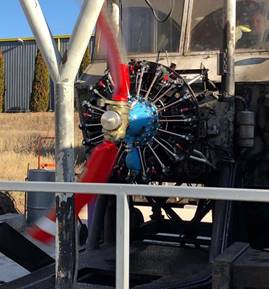
|
| Description: |
|
| Filesize: |
17.28 KB |
| Viewed: |
3173 Time(s) |
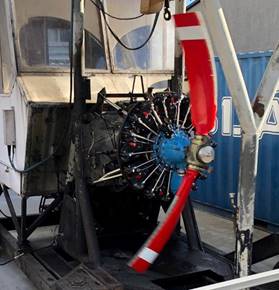
|
| Description: |
|
| Filesize: |
17.05 KB |
| Viewed: |
3173 Time(s) |
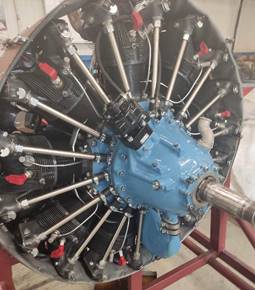
|
| Description: |
|
| Filesize: |
16.27 KB |
| Viewed: |
3173 Time(s) |
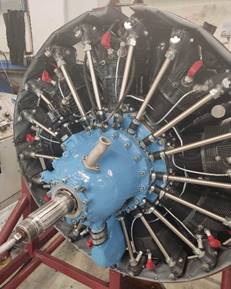
|
|
|
| Back to top |
|
 |
dsavarese0812(at)bellsout
Guest
|
 Posted: Thu Feb 10, 2022 10:55 am Post subject: Housai engine overhaul update - Very successful extended tes Posted: Thu Feb 10, 2022 10:55 am Post subject: Housai engine overhaul update - Very successful extended tes |
 |
|
Hello Richard, I would very much like to have a copy of the video.
Dennis Savarese
Sent from my iPhone
| Quote: | On Feb 10, 2022, at 11:46 AM, Richard Goode <richard.goode(at)russianaeros.com> wrote:
v\:* {behavior:url(#default#VML);} o\:* {behavior:url(#default#VML);} w\:* {behavior:url(#default#VML);} .shape {behavior:url(#default#VML);} <![endif]--> <![endif]--> <![endif]-->
Very successful extended test of our first Housai overhaul!
And dynamometer tested at 354 hp!
We have spent much longer than we would normally to totally overhaul our first HS-6 engine, although it is almost identical to the AI 14 engine which we have been overhauling for 60 years. But we had dismantled AI 14 and HS-6 side-by-side to establish the few areas of difference, and also importantly, which we know will be necessary for military customers for this engine, we needed to have a full and detailed overhaul manual. We were able to obtain a slightly abbreviated manual from China, which of course needed translating, and then combined that with the full AI 14 overhaul manual, but of course using the many thousands of different Chinese part numbers.
And, as we have written before, we could see that there was a strong requirement from private pilots to have more power, to an extent to reduce the attraction of changing to the M 14 engine of 360 hp. Of course this is a complex change involving quite a lot of differences to the airframe in terms of oil system; oil breather; mounting of the air intake gills, and of course the requirement for a totally different propeller. So we set ourselves the target of 330 hp, which we felt sure would be conservative.
We planned to achieve this through the following:
à Compression ratio increased to 7.2:1 using Carillo pistons
à Turning the engine faster. The AI 14 is catalogued at 260 hp at 2350 rpm. But the AI 14 RF version produced 300 hp with absolutely no mechanical change except turning the engine faster. We believe this was at 2600 rpm.
à When the engines were originally manufactured, it was on a production-line basis with semi-skilled workforce which meant that the authorities allowed quite generous tolerances to avoid any problems in service. In particular the clearance between impeller and diffuser in the supercharger was significantly larger than can be obtained if very careful assembly by skilled specialists is used. We know from our M 14 experience that moving the two more closely, albeit totally safely, will immediately increase power by 25 hp.
à Smoothing the junctions at each end of the intake tubes between supercharger and cylinders.
à Installing our AYC coils and automotive plug conversion kit.
It should be noted that the reason that the HS-6 develops 285 hp rather than the 260 hp of the AI 14 is simply because the supercharger turns faster, rather like our PF conversion on the M 14 engine, through different gears in the accessory drive.
The final result was 307 hp at 2350 rpm and 354 hp 2500 rpm. The engine was completely smooth and all parameters absolutely normal. We feel that increasing it to 2600 rpm will increase the power more, but that the current limitation is the efficiency of the original Chinese propeller, and until a better propeller is available, there is probably no point to increase rpm and obtain more power.
We recognise that some might be sceptical about these power outputs, but firstly an AI 14 RF but with the HS-6 supercharger gearing would probably deliver 325 hp at 2600 rpm. Given the other modifications that we have done, the achievements are quite reasonable. I should also point out that this is a properly calibrated dynamometer with the strain gauge inbetween propeller shaft and propeller sending the torque figure via Bluetooth to a laptop.
Inevitably we expect that people will ask us about potential powers beyond 354 hp, and importantly that this was measured at only 2500 rpm on the basis that we felt with current propellers that further power was not really necessary. However, it is important to examine the HS-6 in relation to the M 14 P which is of course an uprated and updated version of the engine. Interestingly the areas that contribute to power in terms of size of the valves; valve opening and duration are the same between the engines. So issues of possible mechanical weakness apart, there's no reason why the two should not give the same power. However the M 14 P is strengthened in a number of quite important ways. Firstly the piston are 26 mm diameter rather than 24 mm diameter; the crankshaft main bushings are slightly larger in the M 14 P. And indeed the drive gearbox of the P has six satellite gears rather than the three of the HS-6.
Having said that, we currently produce M 14 PF engines that give a reliable 450 hp at 3000 rpm, and given this, we would regard it as being perfectly safe to produce a version of the Housai at 370 hp at (say) 2600 rpm. Inevitably the more power an engine develops, it will wear a little more quickly, but typically high power settings are only used for brief periods, and from our experience, overall life would not be noticeably affected.
We already have an additional five firm orders for Housai overhauls, but would be keen to take on further work for later in this year. We can overhaul your original engine, but to avoid âdown timeâ, most customers ask us to totally overhaul one of our stock engines to their specification; we send it to them and they swap the engines over and send their original engine as a âcore exchangeâ to us, and we simply charge our standard overhaul price. If anyone is interested, please come back to us for more information or if you would like to see a video of the test.
[img]cid:image002.jpg(at)01D81E9B.80B1F4E0[/img][img]cid:image004.jpg(at)01D81E9B.80B1F4E0[/img][img]cid:image006.jpg(at)01D81E9B.80B1F4E0[/img][img]cid:image008.jpg(at)01D81E9B.80B1F4E0[/img]
RICHARD GOODE AEROBATICS
Rhodds Farm, Lyonshall, Hereford, HR5 3LW, UK
Tel: +44 (0)1544 340120 Fax: +44 (0)1544 340129
e-mail: richard.goode(at)russianaeros.com (richard.goode(at)russianaeros.com)
www.russianaeros.com
WORLD LEADERS IN RUSSIAN SPORTING AIRCRAFT & ENGINES
In partnership with Aerometal Kft, Hungary.
|
| | - The Matronics Yak-List Email Forum - | | | Use the List Feature Navigator to browse the many List utilities available such as the Email Subscriptions page, Archive Search & Download, 7-Day Browse, Chat, FAQ, Photoshare, and much more:
http://www.matronics.com/Navigator?Yak-List |
|
| Description: |
|
| Filesize: |
17.41 KB |
| Viewed: |
3169 Time(s) |
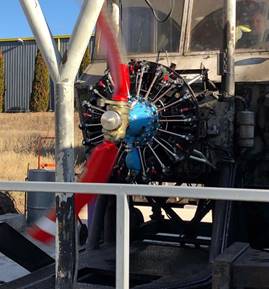
|
| Description: |
|
| Filesize: |
17.28 KB |
| Viewed: |
3169 Time(s) |
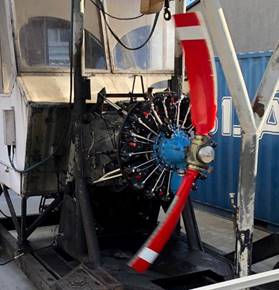
|
| Description: |
|
| Filesize: |
17.05 KB |
| Viewed: |
3169 Time(s) |

|
| Description: |
|
| Filesize: |
16.27 KB |
| Viewed: |
3169 Time(s) |
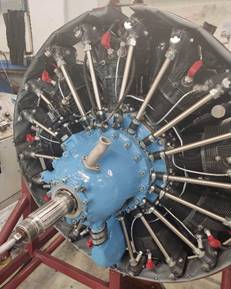
|
|
|
| Back to top |
|
 |
hess737(at)aol.com
Guest
|
 Posted: Thu Feb 10, 2022 1:47 pm Post subject: Housai engine overhaul update - Very successful extended tes Posted: Thu Feb 10, 2022 1:47 pm Post subject: Housai engine overhaul update - Very successful extended tes |
 |
|
Congrats Richard!
Richard HessC 404-964-4885
| Quote: | On Feb 10, 2022, at 1:27 PM, Richard Goode <richard.goode(at)russianaeros.com> wrote:
v\:* {behavior:url(#default#VML);} o\:* {behavior:url(#default#VML);} w\:* {behavior:url(#default#VML);} .shape {behavior:url(#default#VML);} <![endif]--> <![endif]--> <![endif]-->
Very successful extended test of our first Housai overhaul!
And dynamometer tested at 354 hp!
We have spent much longer than we would normally to totally overhaul our first HS-6 engine, although it is almost identical to the AI 14 engine which we have been overhauling for 60 years. But we had dismantled AI 14 and HS-6 side-by-side to establish the few areas of difference, and also importantly, which we know will be necessary for military customers for this engine, we needed to have a full and detailed overhaul manual. We were able to obtain a slightly abbreviated manual from China, which of course needed translating, and then combined that with the full AI 14 overhaul manual, but of course using the many thousands of different Chinese part numbers.
And, as we have written before, we could see that there was a strong requirement from private pilots to have more power, to an extent to reduce the attraction of changing to the M 14 engine of 360 hp. Of course this is a complex change involving quite a lot of differences to the airframe in terms of oil system; oil breather; mounting of the air intake gills, and of course the requirement for a totally different propeller. So we set ourselves the target of 330 hp, which we felt sure would be conservative.
We planned to achieve this through the following:
à Compression ratio increased to 7.2:1 using Carillo pistons
à Turning the engine faster. The AI 14 is catalogued at 260 hp at 2350 rpm. But the AI 14 RF version produced 300 hp with absolutely no mechanical change except turning the engine faster. We believe this was at 2600 rpm.
à When the engines were originally manufactured, it was on a production-line basis with semi-skilled workforce which meant that the authorities allowed quite generous tolerances to avoid any problems in service. In particular the clearance between impeller and diffuser in the supercharger was significantly larger than can be obtained if very careful assembly by skilled specialists is used. We know from our M 14 experience that moving the two more closely, albeit totally safely, will immediately increase power by 25 hp.
à Smoothing the junctions at each end of the intake tubes between supercharger and cylinders.
à Installing our AYC coils and automotive plug conversion kit.
It should be noted that the reason that the HS-6 develops 285 hp rather than the 260 hp of the AI 14 is simply because the supercharger turns faster, rather like our PF conversion on the M 14 engine, through different gears in the accessory drive.
The final result was 307 hp at 2350 rpm and 354 hp 2500 rpm. The engine was completely smooth and all parameters absolutely normal. We feel that increasing it to 2600 rpm will increase the power more, but that the current limitation is the efficiency of the original Chinese propeller, and until a better propeller is available, there is probably no point to increase rpm and obtain more power.
We recognise that some might be sceptical about these power outputs, but firstly an AI 14 RF but with the HS-6 supercharger gearing would probably deliver 325 hp at 2600 rpm. Given the other modifications that we have done, the achievements are quite reasonable. I should also point out that this is a properly calibrated dynamometer with the strain gauge inbetween propeller shaft and propeller sending the torque figure via Bluetooth to a laptop.
Inevitably we expect that people will ask us about potential powers beyond 354 hp, and importantly that this was measured at only 2500 rpm on the basis that we felt with current propellers that further power was not really necessary. However, it is important to examine the HS-6 in relation to the M 14 P which is of course an uprated and updated version of the engine. Interestingly the areas that contribute to power in terms of size of the valves; valve opening and duration are the same between the engines. So issues of possible mechanical weakness apart, there's no reason why the two should not give the same power. However the M 14 P is strengthened in a number of quite important ways. Firstly the piston are 26 mm diameter rather than 24 mm diameter; the crankshaft main bushings are slightly larger in the M 14 P. And indeed the drive gearbox of the P has six satellite gears rather than the three of the HS-6.
Having said that, we currently produce M 14 PF engines that give a reliable 450 hp at 3000 rpm, and given this, we would regard it as being perfectly safe to produce a version of the Housai at 370 hp at (say) 2600 rpm. Inevitably the more power an engine develops, it will wear a little more quickly, but typically high power settings are only used for brief periods, and from our experience, overall life would not be noticeably affected.
We already have an additional five firm orders for Housai overhauls, but would be keen to take on further work for later in this year. We can overhaul your original engine, but to avoid âdown timeâ, most customers ask us to totally overhaul one of our stock engines to their specification; we send it to them and they swap the engines over and send their original engine as a âcore exchangeâ to us, and we simply charge our standard overhaul price. If anyone is interested, please come back to us for more information or if you would like to see a video of the test.
[img]cid:image002.jpg(at)01D81E9B.80B1F4E0[/img][img]cid:image004.jpg(at)01D81E9B.80B1F4E0[/img][img]cid:image006.jpg(at)01D81E9B.80B1F4E0[/img][img]cid:image008.jpg(at)01D81E9B.80B1F4E0[/img]
RICHARD GOODE AEROBATICS
Rhodds Farm, Lyonshall, Hereford, HR5 3LW, UK
Tel: +44 (0)1544 340120 Fax: +44 (0)1544 340129
e-mail: richard.goode(at)russianaeros.com (richard.goode(at)russianaeros.com)
www.russianaeros.com
WORLD LEADERS IN RUSSIAN SPORTING AIRCRAFT & ENGINES
In partnership with Aerometal Kft, Hungary.
|
| | - The Matronics Yak-List Email Forum - | | | Use the List Feature Navigator to browse the many List utilities available such as the Email Subscriptions page, Archive Search & Download, 7-Day Browse, Chat, FAQ, Photoshare, and much more:
http://www.matronics.com/Navigator?Yak-List |
|
| Description: |
|
| Filesize: |
17.41 KB |
| Viewed: |
3166 Time(s) |
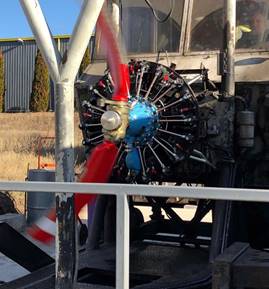
|
| Description: |
|
| Filesize: |
17.28 KB |
| Viewed: |
3166 Time(s) |
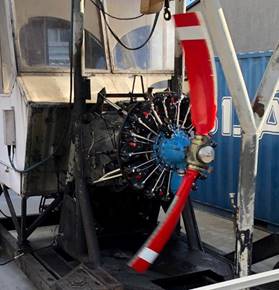
|
| Description: |
|
| Filesize: |
17.05 KB |
| Viewed: |
3166 Time(s) |
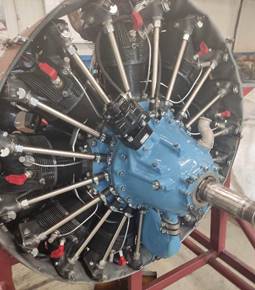
|
| Description: |
|
| Filesize: |
16.27 KB |
| Viewed: |
3166 Time(s) |
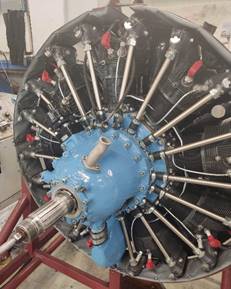
|
|
|
| Back to top |
|
 |
carl.rueck(at)gmail.com
Guest
|
 Posted: Fri Feb 11, 2022 11:11 pm Post subject: Housai engine overhaul update - Very successful extended tes Posted: Fri Feb 11, 2022 11:11 pm Post subject: Housai engine overhaul update - Very successful extended tes |
 |
|
Please remove my name from this distribution
Thank you
Carl
Carl-r(at)telus.net.
[quote] On Feb 10, 2022, at 11:01 AM, Anthony Savarese <dsavarese0812(at)bellsouth.net> wrote:
Hello Richard,
I would very much like to have a copy of the video.
Dennis Savarese
Sent from my iPhone
>> On Feb 10, 2022, at 11:46 AM, Richard Goode <richard.goode(at)russianaeros.com> wrote:
>>
> 
>
> Very successful extended test of our first Housai overhaul!
> And dynamometer tested at 354 hp!
> We have spent much longer than we would normally to totally overhaul our first HS-6 engine, although it is almost identical to the AI 14 engine which we have been overhauling for 60 years. But we had dismantled AI 14 and HS-6 side-by-side to establish the few areas of difference, and also importantly, which we know will be necessary for military customers for this engine, we needed to have a full and detailed overhaul manual. We were able to obtain a slightly abbreviated manual from China, which of course needed translating, and then combined that with the full AI 14 overhaul manual, but of course using the many thousands of different Chinese part numbers.
> And, as we have written before, we could see that there was a strong requirement from private pilots to have more power, to an extent to reduce the attraction of changing to the M 14 engine of 360 hp. Of course this is a complex change involving quite a lot of differences to the airframe in terms of oil system; oil breather; mounting of the air intake gills, and of course the requirement for a totally different propeller. So we set ourselves the target of 330 hp, which we felt sure would be conservative.
> We planned to achieve this through the following:
> Ã Compression ratio increased to 7.2:1 using Carillo pistons
> Ã Turning the engine faster. The AI 14 is catalogued at 260 hp at 2350 rpm. But the AI 14 RF version produced 300 hp with absolutely no mechanical change except turning the engine faster. We believe this was at 2600 rpm
| | - The Matronics Yak-List Email Forum - | | | Use the List Feature Navigator to browse the many List utilities available such as the Email Subscriptions page, Archive Search & Download, 7-Day Browse, Chat, FAQ, Photoshare, and much more:
http://www.matronics.com/Navigator?Yak-List |
|
|
|
| Back to top |
|
 |
carl.rueck(at)gmail.com
Guest
|
 Posted: Fri Feb 11, 2022 11:11 pm Post subject: Housai engine overhaul update - Very successful extended tes Posted: Fri Feb 11, 2022 11:11 pm Post subject: Housai engine overhaul update - Very successful extended tes |
 |
|
Please remove my name from this distributionThank youCarlCarl-r(at)telus.net.
| Quote: | On Feb 10, 2022, at 8:49 AM, Richard Goode <richard.goode(at)russianaeros.com> wrote:
v\:* {behavior:url(#default#VML);} o\:* {behavior:url(#default#VML);} w\:* {behavior:url(#default#VML);} .shape {behavior:url(#default#VML);} <![endif]--> <![endif]--> <![endif]-->
Very successful extended test of our first Housai overhaul!
And dynamometer tested at 354 hp!
We have spent much longer than we would normally to totally overhaul our first HS-6 engine, although it is almost identical to the AI 14 engine which we have been overhauling for 60 years. But we had dismantled AI 14 and HS-6 side-by-side to establish the few areas of difference, and also importantly, which we know will be necessary for military customers for this engine, we needed to have a full and detailed overhaul manual. We were able to obtain a slightly abbreviated manual from China, which of course needed translating, and then combined that with the full AI 14 overhaul manual, but of course using the many thousands of different Chinese part numbers.
And, as we have written before, we could see that there was a strong requirement from private pilots to have more power, to an extent to reduce the attraction of changing to the M 14 engine of 360 hp. Of course this is a complex change involving quite a lot of differences to the airframe in terms of oil system; oil breather; mounting of the air intake gills, and of course the requirement for a totally different propeller. So we set ourselves the target of 330 hp, which we felt sure would be conservative.
We planned to achieve this through the following:
à Compression ratio increased to 7.2:1 using Carillo pistons
à Turning the engine faster. The AI 14 is catalogued at 260 hp at 2350 rpm. But the AI 14 RF version produced 300 hp with absolutely no mechanical change except turning the engine faster. We believe this was at 2600 rpm.
à When the engines were originally manufactured, it was on a production-line basis with semi-skilled workforce which meant that the authorities allowed quite generous tolerances to avoid any problems in service. In particular the clearance between impeller and diffuser in the supercharger was significantly larger than can be obtained if very careful assembly by skilled specialists is used. We know from our M 14 experience that moving the two more closely, albeit totally safely, will immediately increase power by 25 hp.
à Smoothing the junctions at each end of the intake tubes between supercharger and cylinders.
à Installing our AYC coils and automotive plug conversion kit.
It should be noted that the reason that the HS-6 develops 285 hp rather than the 260 hp of the AI 14 is simply because the supercharger turns faster, rather like our PF conversion on the M 14 engine, through different gears in the accessory drive.
The final result was 307 hp at 2350 rpm and 354 hp 2500 rpm. The engine was completely smooth and all parameters absolutely normal. We feel that increasing it to 2600 rpm will increase the power more, but that the current limitation is the efficiency of the original Chinese propeller, and until a better propeller is available, there is probably no point to increase rpm and obtain more power.
We recognise that some might be sceptical about these power outputs, but firstly an AI 14 RF but with the HS-6 supercharger gearing would probably deliver 325 hp at 2600 rpm. Given the other modifications that we have done, the achievements are quite reasonable. I should also point out that this is a properly calibrated dynamometer with the strain gauge inbetween propeller shaft and propeller sending the torque figure via Bluetooth to a laptop.
Inevitably we expect that people will ask us about potential powers beyond 354 hp, and importantly that this was measured at only 2500 rpm on the basis that we felt with current propellers that further power was not really necessary. However, it is important to examine the HS-6 in relation to the M 14 P which is of course an uprated and updated version of the engine. Interestingly the areas that contribute to power in terms of size of the valves; valve opening and duration are the same between the engines. So issues of possible mechanical weakness apart, there's no reason why the two should not give the same power. However the M 14 P is strengthened in a number of quite important ways. Firstly the piston are 26 mm diameter rather than 24 mm diameter; the crankshaft main bushings are slightly larger in the M 14 P. And indeed the drive gearbox of the P has six satellite gears rather than the three of the HS-6.
Having said that, we currently produce M 14 PF engines that give a reliable 450 hp at 3000 rpm, and given this, we would regard it as being perfectly safe to produce a version of the Housai at 370 hp at (say) 2600 rpm. Inevitably the more power an engine develops, it will wear a little more quickly, but typically high power settings are only used for brief periods, and from our experience, overall life would not be noticeably affected.
We already have an additional five firm orders for Housai overhauls, but would be keen to take on further work for later in this year. We can overhaul your original engine, but to avoid âdown timeâ, most customers ask us to totally overhaul one of our stock engines to their specification; we send it to them and they swap the engines over and send their original engine as a âcore exchangeâ to us, and we simply charge our standard overhaul price. If anyone is interested, please come back to us for more information or if you would like to see a video of the test.
[img]cid:image002.jpg(at)01D81E9B.80B1F4E0[/img][img]cid:image004.jpg(at)01D81E9B.80B1F4E0[/img][img]cid:image006.jpg(at)01D81E9B.80B1F4E0[/img][img]cid:image008.jpg(at)01D81E9B.80B1F4E0[/img]
RICHARD GOODE AEROBATICS
Rhodds Farm, Lyonshall, Hereford, HR5 3LW, UK
Tel: +44 (0)1544 340120 Fax: +44 (0)1544 340129
e-mail: richard.goode(at)russianaeros.com (richard.goode(at)russianaeros.com)
www.russianaeros.com
WORLD LEADERS IN RUSSIAN SPORTING AIRCRAFT & ENGINES
In partnership with Aerometal Kft, Hungary.
|
| | - The Matronics Yak-List Email Forum - | | | Use the List Feature Navigator to browse the many List utilities available such as the Email Subscriptions page, Archive Search & Download, 7-Day Browse, Chat, FAQ, Photoshare, and much more:
http://www.matronics.com/Navigator?Yak-List |
|
| Description: |
|
| Filesize: |
17.41 KB |
| Viewed: |
3138 Time(s) |
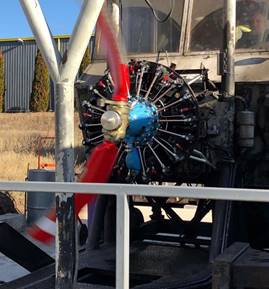
|
| Description: |
|
| Filesize: |
17.28 KB |
| Viewed: |
3138 Time(s) |
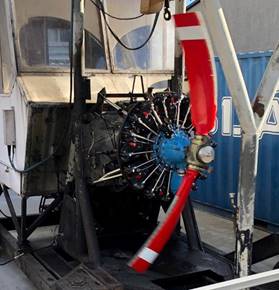
|
| Description: |
|
| Filesize: |
17.05 KB |
| Viewed: |
3138 Time(s) |
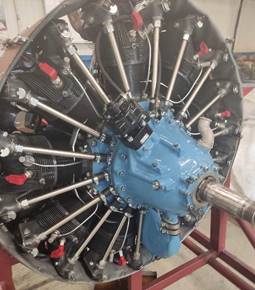
|
| Description: |
|
| Filesize: |
16.27 KB |
| Viewed: |
3138 Time(s) |
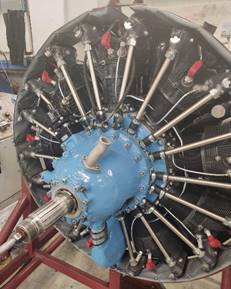
|
|
|
| Back to top |
|
 |
|
|
You cannot post new topics in this forum
You cannot reply to topics in this forum
You cannot edit your posts in this forum
You cannot delete your posts in this forum
You cannot vote in polls in this forum
You cannot attach files in this forum
You can download files in this forum
|
Powered by phpBB © 2001, 2005 phpBB Group
|


















